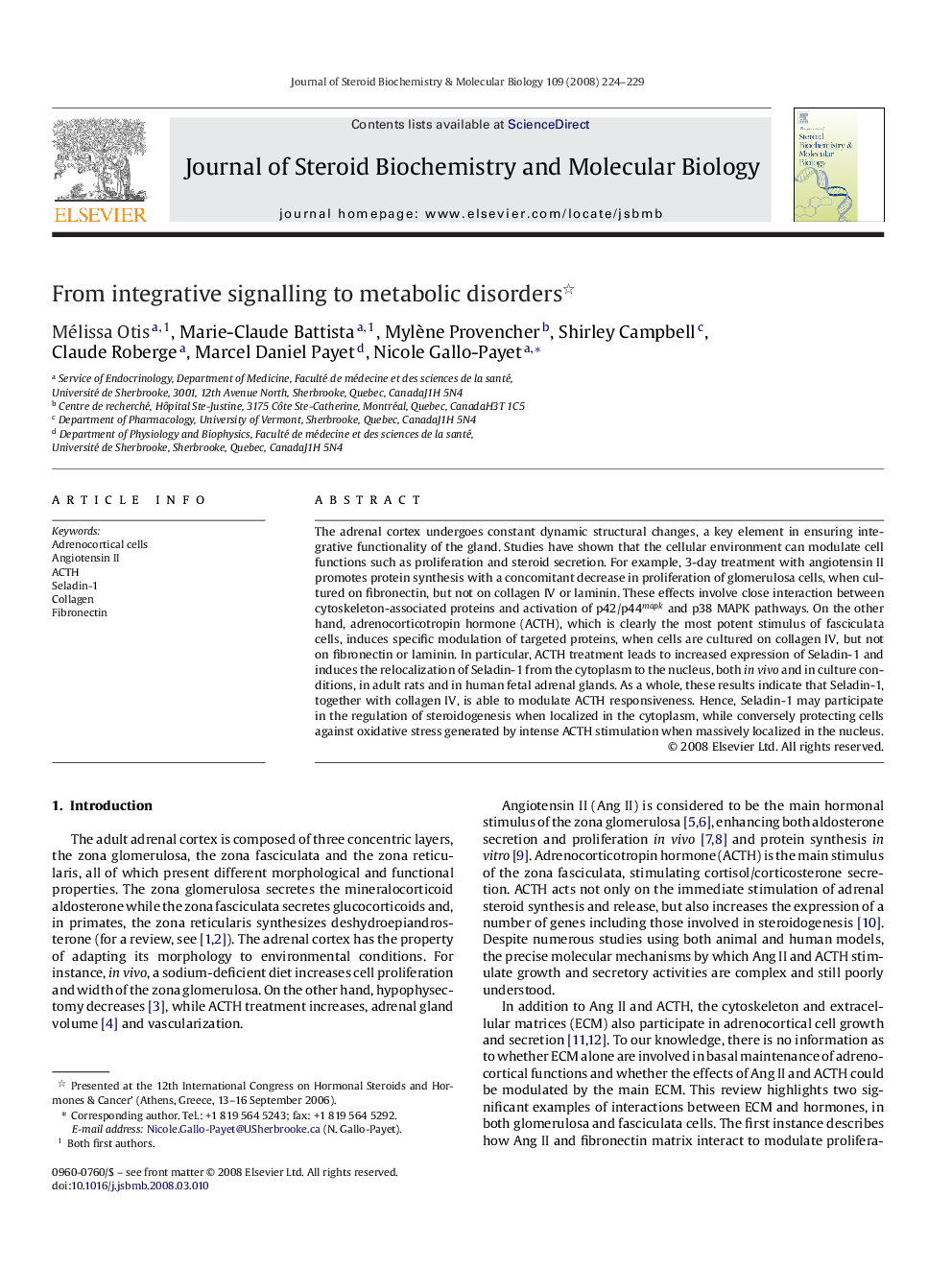| Article ID | Journal | Published Year | Pages | File Type |
|---|---|---|---|---|
| 1992899 | The Journal of Steroid Biochemistry and Molecular Biology | 2008 | 6 Pages |
The adrenal cortex undergoes constant dynamic structural changes, a key element in ensuring integrative functionality of the gland. Studies have shown that the cellular environment can modulate cell functions such as proliferation and steroid secretion. For example, 3-day treatment with angiotensin II promotes protein synthesis with a concomitant decrease in proliferation of glomerulosa cells, when cultured on fibronectin, but not on collagen IV or laminin. These effects involve close interaction between cytoskeleton-associated proteins and activation of p42/p44mapk and p38 MAPK pathways. On the other hand, adrenocorticotropin hormone (ACTH), which is clearly the most potent stimulus of fasciculata cells, induces specific modulation of targeted proteins, when cells are cultured on collagen IV, but not on fibronectin or laminin. In particular, ACTH treatment leads to increased expression of Seladin-1 and induces the relocalization of Seladin-1 from the cytoplasm to the nucleus, both in vivo and in culture conditions, in adult rats and in human fetal adrenal glands. As a whole, these results indicate that Seladin-1, together with collagen IV, is able to modulate ACTH responsiveness. Hence, Seladin-1 may participate in the regulation of steroidogenesis when localized in the cytoplasm, while conversely protecting cells against oxidative stress generated by intense ACTH stimulation when massively localized in the nucleus.
